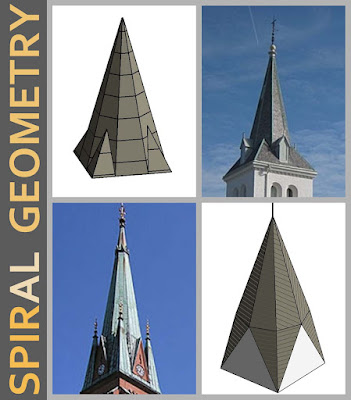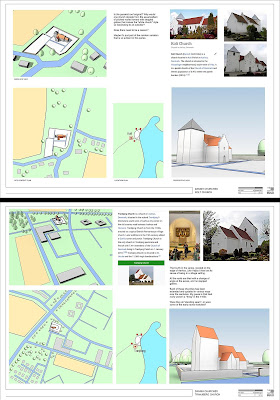HERE WE GO ASPIRING
If you want to feel happy, help someone else. You may have heard that idea. I think there’s a nugget of truth there.
This blog is for me. It’s a ritual that has given structure to my “private study” for over a decade. A routine that motivates me to go to the extra mile.
But it works because it’s addressed to an audience. I’m not really motivated to build my audience and “get famous“ but I only really get the motivational benefit because there are a few people out there listening. I’m not just talking to myself.
My son Joe told me what a blog was about 16 years ago, or tried to. He was a student in Cape Town. I had been in Dubai for about 18 months, not sure how long I would stay, but desperate to earn real money to put him and his younger brother through university, after the Zimbabwe economy went info free fall.
The focus of this blog has been to document my personal journey, my weekends of exploring ideas. Digital tools are front and centre, but the connection to physical activity is crucial. I used to lay bricks. I’m an old school guy in many ways.
I have been enlarging my map of Denmark to incorporate the Swedish island of Gotland. It's been a good learning experience for me. Drawing maps is always a good way to understand geography better. I like to draw with Revit which allows me to incorporate 3d and data into my sketch.
Perhaps blogging is just an extension of the internal dialogue that we all carry around in our heads. I have always felt that language is just the tip of the iceberg, a thin veneer. I grew up with a pencil in my hand, I think in diagrams and patterns, relationships. Music often plays in my head, one of the threads that weaves its way through my stream of consciousness.
Perhaps we should call it the internal multilog. We have no idea how multi-threaded our subconscious world is. I think in terms of to the physical and chemical multi-threaded networks that chug along incessantly throughout our lives.
I have often been a night owl. All nighters. Burning the candle. It’s some kind of flow state.
A dream world now drawing, painting, playing music into the darkness. Letting the ideas emerge and illuminate a little circle of light around me as I drift through the midnight hours.
As I got older and became a parent, getting up early and doing my day took control. I wake around 6 mostly now. So I try to sleep by 10. But still the night owl is reincarnated as insomnia. I’m typing this into my phone at 3am. Grasping at ideas before they evaporate with the morning mist.
Commercial Break: this popped up on Linked In. Starbucks effusing over their branch at Marsa al Seef. This is a project along the Creek in Dubai which I worked on a few years back. Had a lot of fun making “traditional style” families. It’s an interesting challenge trying to capture just enough detail to evoke a trad feel, without overloading the model.
I used to keep pocket notebooks. They were also a mixture of words and images in equal measure. The digital world allows me to share that activity with others. To interact with a circle of friends and acquaintances.
I guess my sheet layouts have now evolved into a kind of notebook format also. Revit views, textual info, images grabbed during research. Kind of multi-threaded collages with a BIM feel. Here’s the Gotland churches sheet. Six examples, located via a Revit map, compared analytically via a set of assembly views with a common layout.
So in a way, the sketching and note scribbling of my youth has coevolved with the digital era. I acquired my first desktop device in the late 80s. My first laptop a decade later. Portability makes a huge difference. You don’t really understand anything until you experience it. You can have a desk diary that you write up every evening, but a pocket notebook that travels around with your body takes you into another dimension. Embodied cognition. These smartphones are dangerous but so was the printing press.
Meanwhile, I’m exploring different kinds of spire. These are parametric families. You get to define the base width, the roof angle, and for Broach spires, the “knee ratio” (how far up the transition from square to octagon happens, as a value between zero and one)
I find myself absorbing new tools but still continuing a journey that began in the 1950s, before I even had television. Visual thinking + learning by doing. With hindsight, TV was a distraction, far too passive as a medium. I stopped watching 25 years ago, having wasted countless hours, although I often drew while the TV was on.
I had a little back-and-forth with my friend Alfredo Medina who has quite a clever way of creating a parametric octagon. Not necessarily applicable to the profiles embedded in these spire families, but always good to share ideas.
I’ve been reading Inspector Morse books while attempting to drift off to sleep in the evenings. British detective series. That was a TV series I actually enjoyed and the books turn out to be equally good in a slightly different way. Got me thinking about Morse code. Again the ability of a smartphone to jump between Kindle and Wikipedia. Flawed though both of these “knowledge sources” … the ability to do a quick background check without losing the flow of a story, is quite special, enhanced further by highlighting nice turns of phrase in the Kindle app, and using my stylus to capture bits of text/image from Woke-ipedia.
Morse code formed a bridge during the rapid evolution of technology during the late 19th and early 20th centuries. Sending messages in real time over long distances. There was a manual/embodied element and an acquired skill of converting patterns into language at a sub-conscious level. We are in an age where technologies are born, spread across the globe, & fade away during the course of a single lifetime.
The evolution of spire carpentry and the spread of regional variants operated over much slower timescales, and they still have cultural relevance. They aren’t just curiosities in museums like morse keys or floppy disks.
Interesting aside. I’ve noted before how “Join Geometry” can sometimes lead to cleaning up of geometry that goes way beyond the original intent. Complex solids with unwanted edges can often be improved by cutting with a small void in some hidden location (or joining a small solid)
In this case, joining the two blends that go to make up a broach spire also improves the orientation of the fill patterns in the material definition.

































